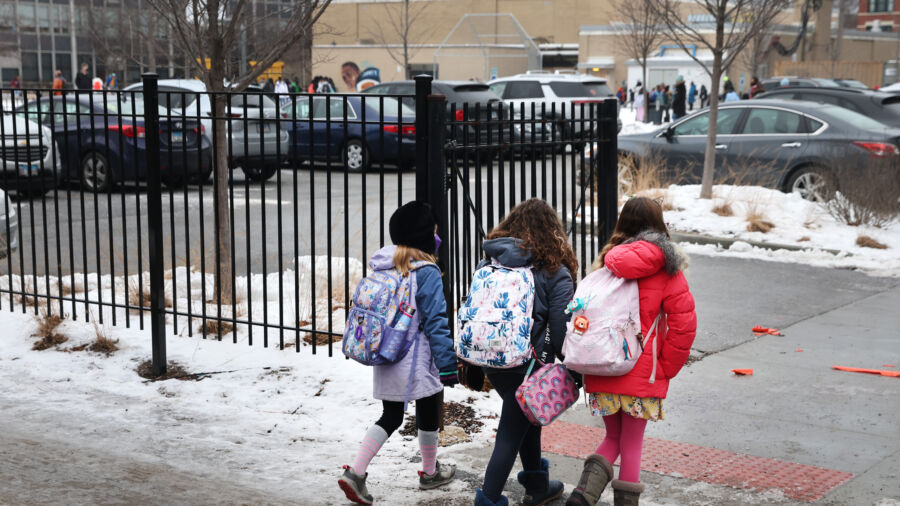Millions of dollars in pandemic-era relief spending that went to K-12 public education and universities was misspent, according to federal and state audits.
As COVID-19 spread around the world in 2020, federal, state, and local officials encouraged or ordered policies that led to the closures of businesses and schools around the United States. Between 2020 and 2021, Congress appropriated about $7 trillion in economic stimulus spending, including about $280 billion for states, K–12 schools, school districts, and institutions of higher education.
The U.S. Department of Education’s (DoE) Office of Inspector General has compiled audit reports from several states, at times finding state governments had insufficient procedures for distributing pandemic-era funds given to them by the federal government.
For example, a DoE audit of funds (pdf) given to Oklahoma through the Governor’s Emergency Education Relief (GEER) fund found that the state lacked assurances that $31 million, out of the $40 million appropriated to the state, was used appropriately. An audit of Michigan’s GEER-related spending (pdf) found potentially insufficient assurances that $5.4 million, of the $89.4 million the state received, was used properly.
In a comment to the Wall Street Journal, Republican Oklahoma Governor Kevin Stitt blamed the lack of accounting for pandemic-relief money in part on pressure from the federal government to quickly disburse education relief money without clear guidance on how it was to be awarded.
“That’s what happens when big government goes out just throwing money around,” Stitt told the publication.
A DoE audit of pandemic relief money for the University of Cincinnati (pdf) determined the university “did not provide complete and accurate student eligibility and financial data to support 3,297 (totaling $3.4 million), or 6 percent, of its award determinations.”
Local officials have also uncovered evidence of mishandled COVID relief. In February, California’s Fiscal Crisis and Management Assistance Team (FCMAT) published a report (pdf) faulting the Stockton Unified School District for awarding a $6.6 million contract to install air purification systems in schools to an out-of-state firm without a competitive bidding process.
Fraud and Scams
While the DoE found some states and schools lacked a sufficient documentary process to ensure the eligibility of their pandemic-era relief fund awards, some individuals have been charged with outright fraud in their handling of education relief money.
In January, a Louisiana man was sentenced to 11 years in prison and ordered to pay restitution of millions of dollars. Prosecutors alleged the man, who ran an education consulting firm, used the information of 180 of his student clients to enrol them in education programs that received pandemic-era relief funding; and instead, directed all of that funding to his personal bank account. The Louisiana man received $1,468,239 in pandemic-era federal student aid loans through this scheme.
The DoE has issued a warning that the pandemic-era scams “can take many shapes, like missing school funds or property, irregularities in contracts or undue influence by people in decision-making positions, identity theft and fraudsters posing as students to steal student aid, or scammers targeting student loan borrowers offering to provide services related to coronavirus student loan relief for a fee.”
Even without being able to directly defraud education relief spending programs, fraudsters have appeared to take advantage of the confusion surrounding pandemic education relief to scam students out of their money.
In September, the Central Connecticut State University Police Department warned students of a scam in which the perpetrator would contact individual students, telling them that they were eligible for financial aid through a “Covid Relief Fund.” Victims would receive a check and believe it to be real, only for the fraudsters to claim that there was an error and request that the money be returned. The victim student would repay out of their own funds only to see the original check they had been issued bounce, leaving them short the amount of money they originally believed they had been awarded. The university warned that one student had already fallen victim to the scam.
On Thursday, President Joe Biden’s administration joined calls for Congress to approve more funding and resources and extend statutes of limitations to investigate and prosecute pandemic-era fraud.


